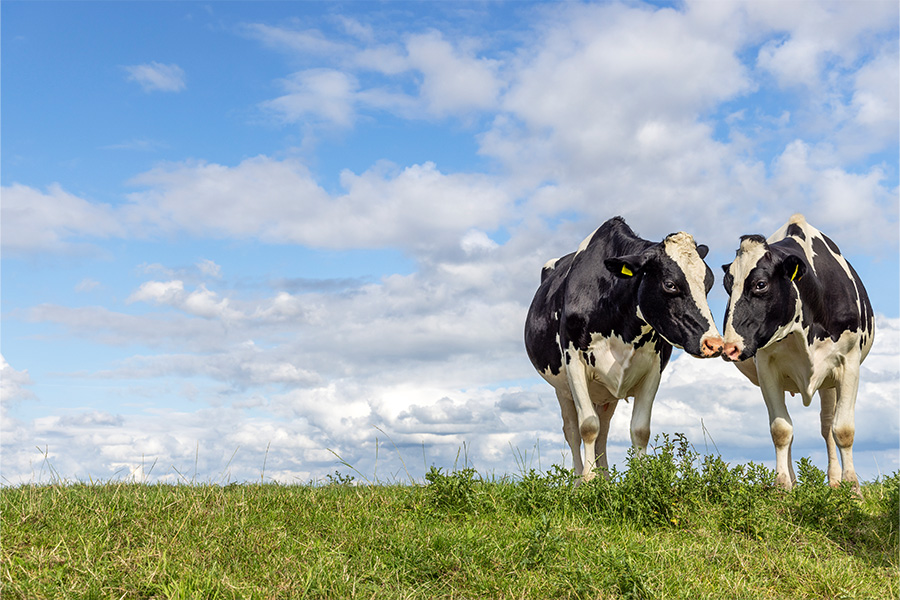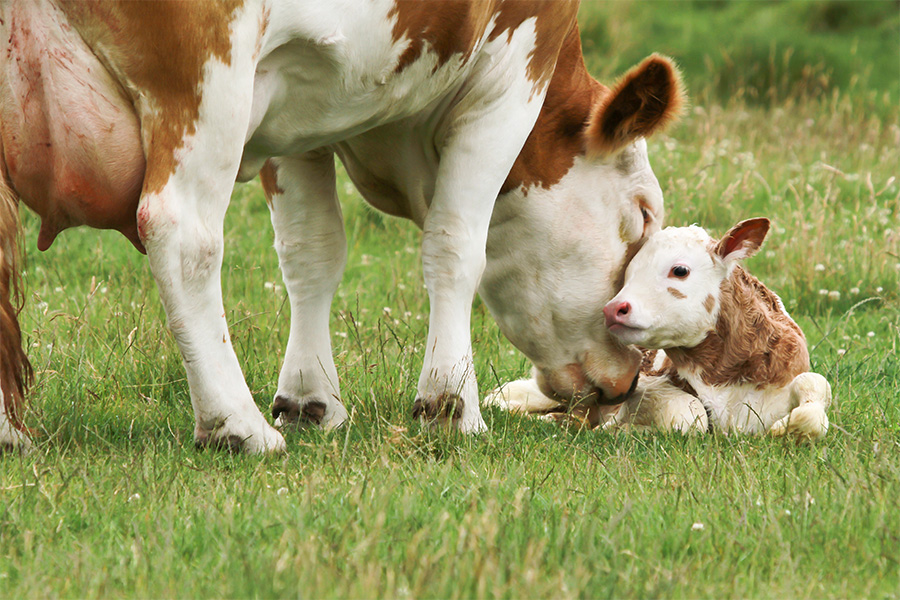Animal Production
-

Using incorrect A.I. techniques can lower the overall success rate of the A.I. breeding program. Most producers learned correct semen handling techniques and insemination procedures at one time; unfortunately, many have developed bad habits that have lowered their success rates. This publication reviews proper procedures that should help eliminate some of those common mistakes.
William Graves
|
-

This brief management guideline provides producers with specific management tactics that may minimize the potential for short- and long-term problems. These tactics, categorized in order of early, advanced, and severe drought stages, are based on specific characteristics including water loss, forage growth, and rainfall.
R. Lacy, Dennis Hancock, and Johnny Rossi
|
-

B 1227-SP
Programas de Sincronización de Hatos
Los datos del programa Dairy Records Management Systems (DRMS) demuestran que hatos de alta producción tienen índices de concepción bajos, y estos tienen también pasarán menos días abiertos y tienen una mayor taza de detección de celo.
[This publication describes dairy herd synchronization programs will help improve your reproductive management efficiency. Try the one that fits your management system the best. Both estrus and ovulation synchronization programs will help get more animals bred more efficiently. Feeding open animals extra days can be costly to producers. Identify open animals and pick the best breeding alternative for your operation.]
William Graves
|
-

La detección de celo es el primer paso para hacer que un animal se preñe. De acuerdo con los registros de la Asociación Nacional para la Información de Hatos Lecheros (DHIA por sus siglas en inglés) los productores en Georgia solo ven un tercio de los celos. Los celos perdidos son uno de varios factores que contribuyen a intervalos largos entre partos. Al aumentar el número de celos observados es posible disminuir el tiempo entre partos.
[When the time comes to examine a herd’s dairy reproductive management program, producers often want to discuss low conception rates. In most cases, however, inadequate heat detection is the much greater reproductive problem. Heat detection is the first step to getting an animal bred. According to DHIA records, producers in Georgia are only seeing a third of their heats. Missed heats are one of several factors that contribute to long calving intervals. By increasing the number of heats observed, it is possible to shorten the interval between calves.]
Jonael Bosques Mendez and William Graves
|
-

Bin composting daily mortality can be a useful, cost-effective management tool when practiced correctly. However, it can be environmentally harmful if it is not managed and monitored properly. This publication shows the necessary steps to obtain a compost product from daily poultry mortality using a bin composting method.
Claudia Dunkley
|
-

B 1211-SP
Resolviendo Problemas Después del Parto
La identificación y el diagnóstico temprano de problemas reproductivos relacionados a nuestro programa de salud del hato es una parte esencial de un manejo eficiente de nuestra producción lechera. Muchos factores durante el periodo horro (seco), el parto y la lactancia temprana pueden disminuir la eficiencia reproductiva. Estos incluyen la mastitis, quistes ováricos, falta de condición física (body condition), placentas retenidas y anestro. También, ciertos desordenes pueden ocurrir simultáneamente. Por ejemplo, una vaca con fiebre de leche frecuentemente padece de una placenta retenida. Estos problemas post-parto alargan los intervalos entre partos y afectan la eficiencia reproductiva.
Jonael Bosques Mendez and William Graves
|
-

By-product feeds come from a variety of sources, including grain processing, production of human foods and beverages, and manufacturing of fiber products. Although many of these feeds have been used for years, others are relatively new. Research has been conducted on most by-product feeds and the guidelines for their use are well documented; however, limited information is available on the feeding value or guidelines for using some by-product feeds. This publication discusses factors that should be considered when feeding by-product feeds to cattle.
John Bernard
|
-

Hot and humid environmental conditions stress the lactating dairy cow and reduce intake of the nutrients necessary to support milk yield and body maintenance. In Georgia, weather conditions are sufficiently hot and humid to reduce performance of dairy cows for five months or more each year. This publication presents methods that can be used to minimize the stress on dairy cows during hot weather and enhance production during the hot summer months.
Joe West and William Graves
|
-

This publication provides reproduction benchmarks for Holstein herds processed by Dairy Records Management Systems. Some examples of using and applying benchmark values are provided; however, this publication should be viewed primarily as a comprehensive resource for reproduction benchmark values. These benchmarks will be useful to dairy producers, dairy managers, consultants, veterinarians and agribusiness representatives as a first step in the analysis of herd management practices.
Warren Gilson, Lane Ely, James Smith, and William Graves
|